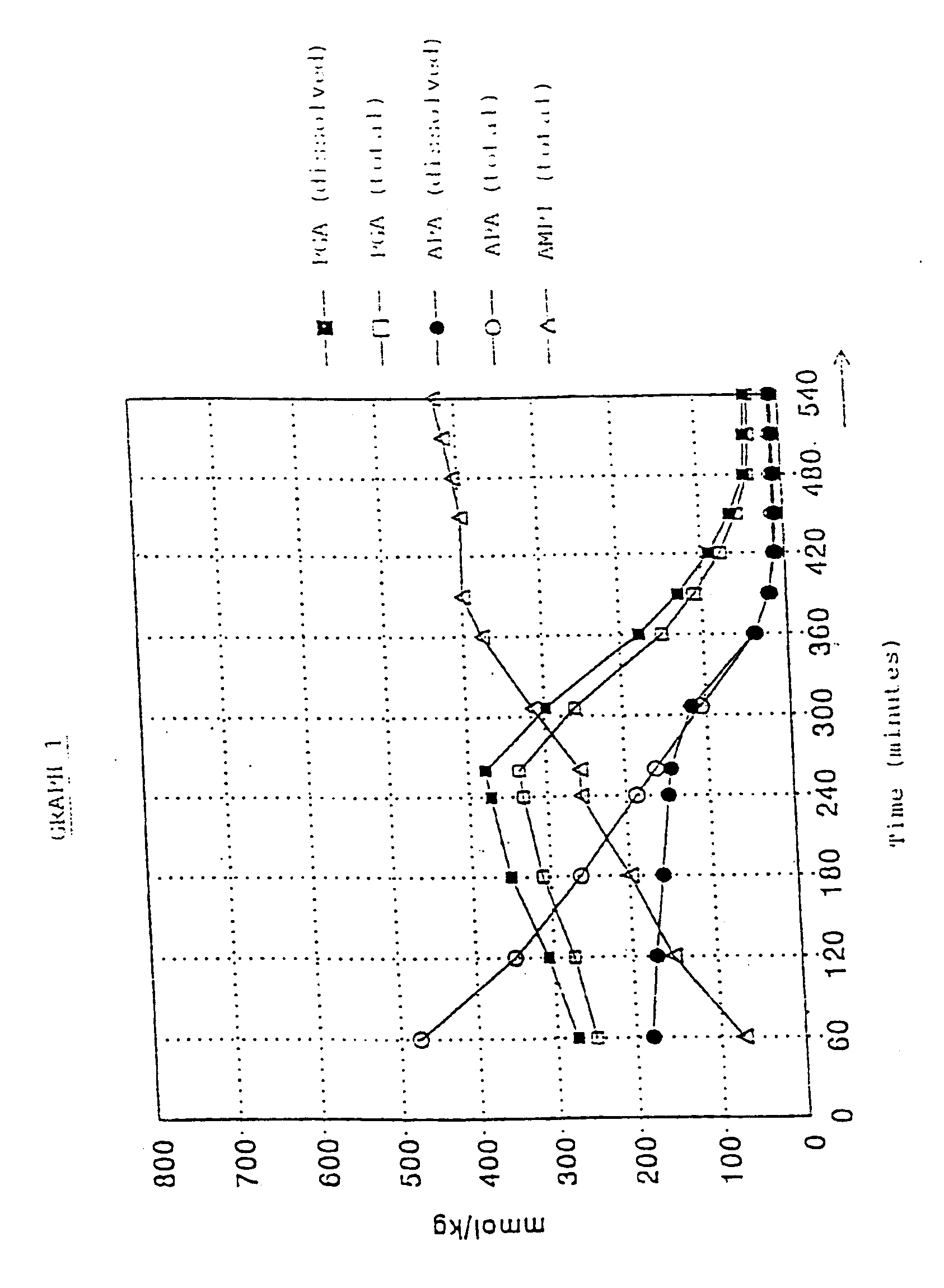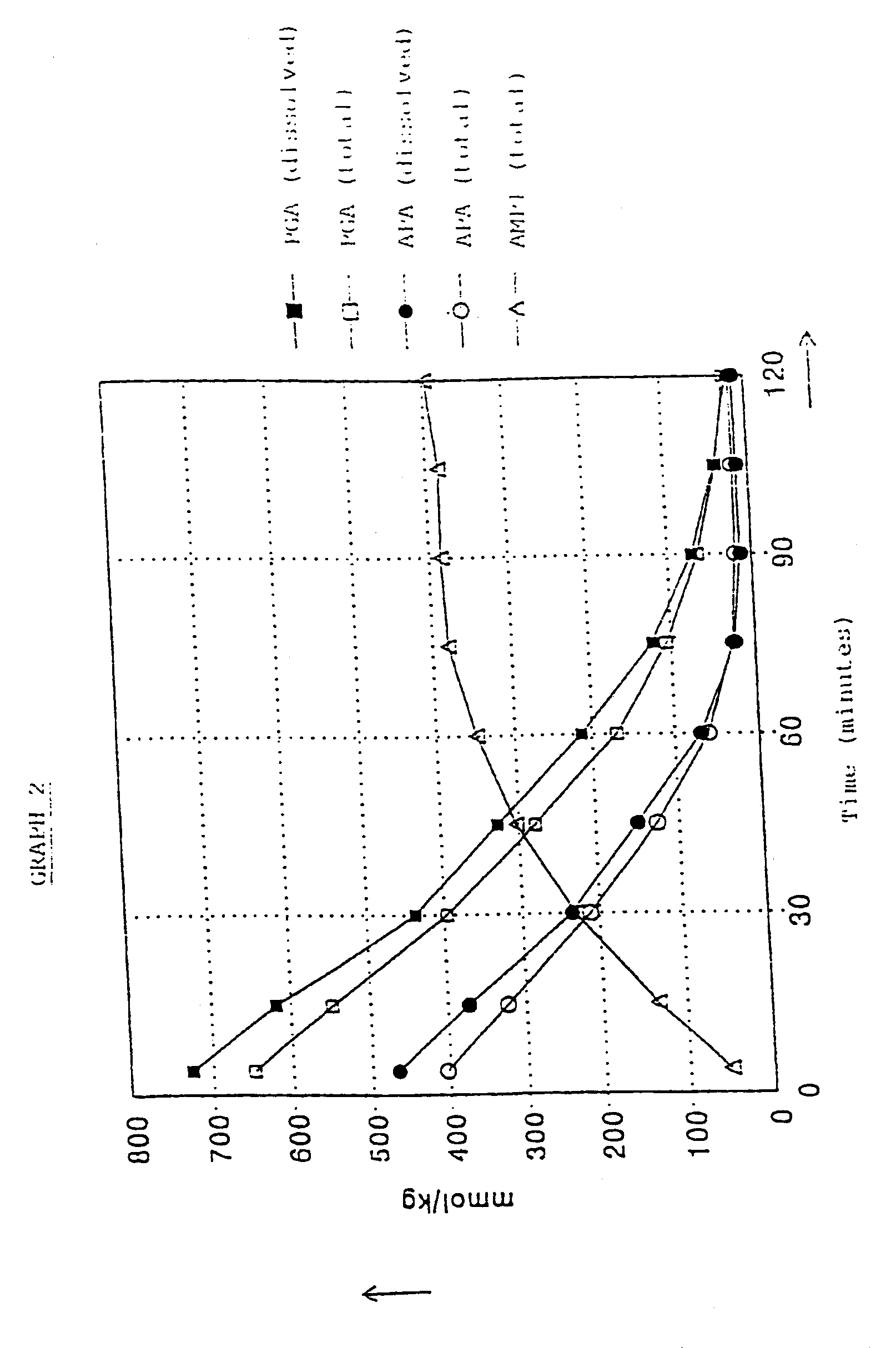Process for the preparation of ampicillin
- Summary
- Abstract
- Description
- Claims
- Application Information
AI Technical Summary
Benefits of technology
Problems solved by technology
Method used
Image
Examples
example i
Preparation of PGA.1 / 2H2SO4 Solution.
[0032]301.6 g of PGA (2.00 mol) was suspended in 650 g of water at T=5° C. 102.1 g of 96% H2SO4 (1.00 mol) was added dropwise over a period of 1 hour, with stirring, with the temperature being kept at T<25° C. by cooling.
example ii
Synthesis of Ampicillin
[0033]An enzyme reactor (1.5 l, diameter 11 cm), fitted with a screen bottom with a 175 μm mesh, was filled with 300 g net wet Assemblaseô.
[0034]A preparation reactor (1.2 l) was filled with 131.6 g of 6-APA (0.600 mol), 30.2 g of PGA (0.200 mol) and 400 ml of water (T=10° C.). This mixture was stirred for 15 minutes at T=10° C. and then transferred to the enzyme reactor at time t=0 with 100 ml of water (T=10° C.).
[0035]At t=0 the agitator in the enzyme reactor was started. Over a period of 283 minutes 423.7 g (0.800 mol) of PGA.1 / 2H2SO4 solution was added at a constant rate, with the temperature being kept at 10° C. The pH was about 6.3. From t=328 minutes onwards the pH was kept at 6.3 by titration with 6N (aqueous) H2SO4. At t=540 minutes the quantity of Ampicillin was at a maximum and the pH was reduced to 5.6 by adding 6N H2SO4.
The enzyme reactor now contained:
[0036]575 mmol of AMPI (=96% relative to the amount of 6-APA used)
[0037]15 mmol of 6-APA
[0038]50...
PUM
| Property | Measurement | Unit |
|---|---|---|
| Molar density | aaaaa | aaaaa |
| Molar density | aaaaa | aaaaa |
| Concentration | aaaaa | aaaaa |
Abstract
Description
Claims
Application Information
 Login to View More
Login to View More - R&D
- Intellectual Property
- Life Sciences
- Materials
- Tech Scout
- Unparalleled Data Quality
- Higher Quality Content
- 60% Fewer Hallucinations
Browse by: Latest US Patents, China's latest patents, Technical Efficacy Thesaurus, Application Domain, Technology Topic, Popular Technical Reports.
© 2025 PatSnap. All rights reserved.Legal|Privacy policy|Modern Slavery Act Transparency Statement|Sitemap|About US| Contact US: help@patsnap.com


